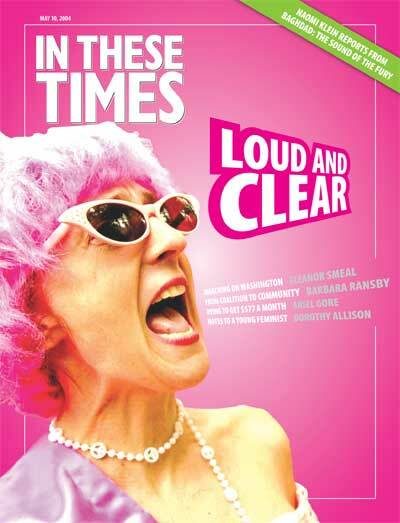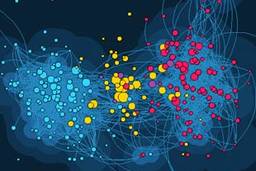This November, female voters in the United States will affect the lives of millions of women around the globe. ¶ While this may ring of American megalomania, it’s distressingly true: Pundits have zeroed in on single women voters under age 65 as the demographic most likely to turn the tide against George W. Bush.
Pollsters Stan Greenberg and Celinda Lake suggest that these historically low-turnout voters — who skew Democratic and vote less frequently than their married counterparts — could have made a crucial difference if they had cast ballots in 2000. Several groups, such as Women’s Voices Women Vote, are working to bring out the country’s disparate single women on Election Day. Possible lures? More female politicians, equal pay initiatives, better retirement plans, expanded health care and public pre-school programs. If courted correctly, this swing group could go to the polls and halt Bush administration schemes to control reproductive choices and women’s freedom at home and abroad.
Bush launched his assault on women’s rights the day he stepped into office by reinstating the Mexico City Policy, known by its detractors as the global gag rule. This policy denies funding to any NGO that offers access to abortions unrelated to health, rape or incest; provides clients with abortion information, or lobbies for the procedure’s legalization. As a result, numerous clinics funded by groups that found it unethical to provide such restricted family-planning services have been forced to close, robbing the world’s poorest inhabitants of much-needed contraceptives and healthcare.
The Bush strategy at home builds on a foundation that anti-choice conservatives have spent years constructing: It’s reflected in the aggressive appointment of anti-abortion judges; FDA stonewalling on over-the-counter sales of the morning-after pill, and Congressional passage in October of the ban on ill-defined late-term abortions — compounded early this year by Attorney General Ashcroft’s invasive demand for hundreds of confidential abortion records.
Bush’s April 1 signing of the Unborn Victims of Violence Act (UVVA), which redefines the legal start of life, is another transparent effort to chip away at abortion rights. UVVA prosecutes crimes against a “child in utero,” providing protections for a fertilized egg, embryo or fetus harmed in the commission of a crime. It also opens the door to criminalizing women who fail to protect “a member of the species homo sapiens, at any stage of development, who is carried in the womb.” Similar state-level laws already have been used to prosecute pregnant women for such non-crimes as alcohol use, failing to escape their batterers and ignoring an obstetrician’s orders.
Elevating the wellbeing of “unborn children” above the health and rights of women already here seems especially twisted, given Bush policies once children arrive. The administration has proposed slashing HUD’s Lead Hazard Control program by 20 percent. The Children’s Defense Fund (CDF) warns that the cut could sharply increase the number of children whose ability to think and learn is harmed by exposure. The CDF also predicted that the phase-out of extended unemployment benefits would cause financial hardship for more than 600,000 families with children. Bush’s 2004 budget cuts to Section 8 housing also threaten to jettison nearly a million families with children into the streets.
The March for Women’s Lives on April 25 promises to escalate and focus resistance to an entire conservative apparatus that treats women’s bodies as vessels and their lives as collateral damage. Marchers will demonstrate the resolve of women and their progressive allies to buttress current freedoms and to keep pushing forward. Coalition-building for the March has proved challenging, and the feminist movement has negotiated its own rocky passage these past two decades, but the time has come for women to focus on a common agenda — in Washington and at the polls. The choice is clear.







